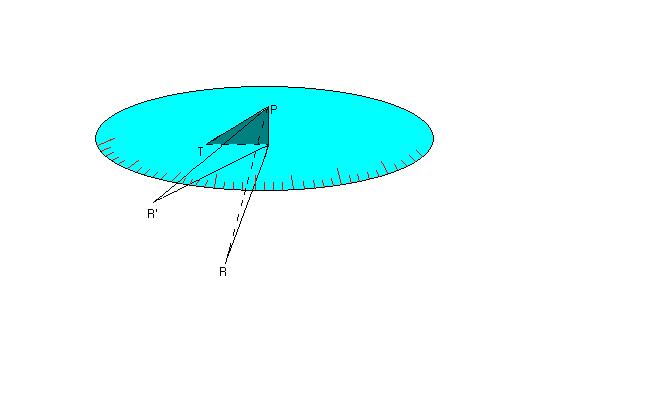
"Excuse me. Watz the time?" And almost immediately you eye your watch. Its become almost like some kind of a reflex for us these days. But pause for a moment. Have you any idea of their ancestors ( the watches' , I mean!) or still better what our ancestors used when asked a question like the one above?! The Sun Dial, of course.
Its working principle is rooted in the very basics of optics - the rectilinear propagation of light. Given a light source and a surface, and an object between them, one can see the shadow of the object on the surface. And almost all of us would have noticed our shadows when walking out in the sun. And also, the careful observer would have noticed how the size of our shadows vary from time to time during the course of the day! More specifically, our shadows are the longest at sunset and sunrise and the shortest at noon. That's because at sunset and sunrise, the sun's rays are slanting and almost parallel to the ground. At noon, the sun is almost overhead and hence the explanation for the shortest shadows at noon. (The noon, of course is that time of the day when the moon is exactly midway between the eastern and western portions of the sky.) The important thing to note here is of course that the direction of the shadow is towards the west before noon and towards the east after noon. At noon, the shadow is along the north-south line.
Now, it is this 'phenomena' that the sun dial is based on! The time is measured using the shadows during the day. For this purpose a straight stick that's perpendicular to a smooth horizontal surface is used. The stick should be straight and smooth so that the shadow has sharp edges. Angles are marked on the smooth surface as shown below :-

The above diagram is not drawn to scale. As can be understood easily, the stick's shadow cast by the sun is towards the west during the first half of the day, and the shadow is towards the east during the second half of the day. Since the length of the shadow varies during the course of the day, the calibrations on the circular disc are designed so as to take care of this factor. As a consequence, the calibrations are not uniformly spaced on the disc. Corrections are also applied to the sun dial's readings in order that we may account for the various other factors. (like time of the year, geographical location, etc. )
For accurate measurements of time, some modifications to this simple device are required. It is obvious that a sun dial can be used only during the day time when the sun is above the horizon. Just as the stars ( like the pointers of Spatarishi ) can be used to measure time during the night, the sun itself can be used to measure time during the day( in the manner described above).
Back Where we left